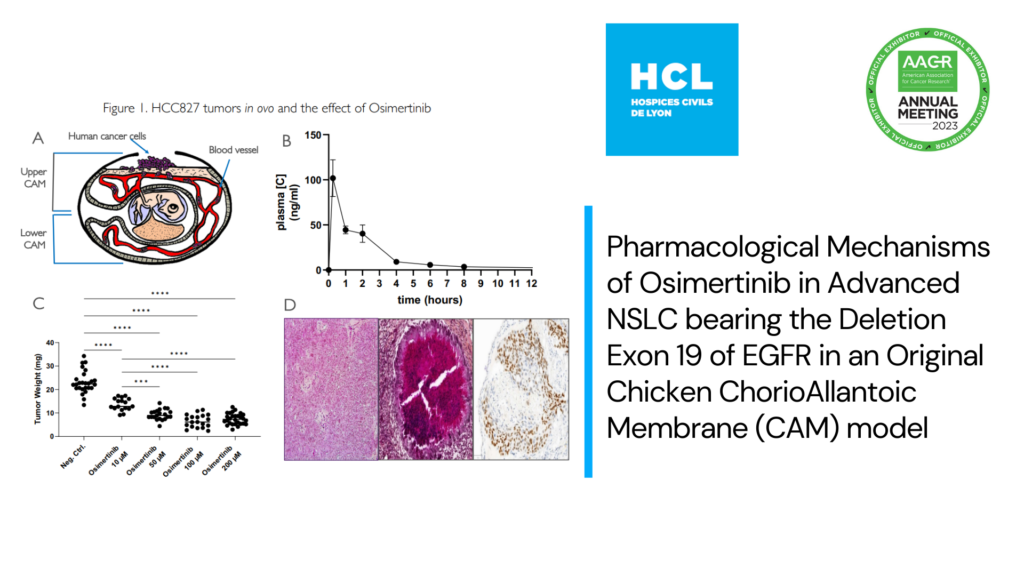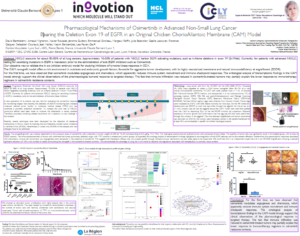Apr 18 2023


Pharmacological Mechanisms of Osimertinib in Advanced NSLC bearing the Deletion Exon 19 of EGFR in an Original Chicken ChorioAllantoic Membrane (CAM) model
| Authors: | David Barthelemy, Arnaud Vigneron, Xavier Rousset, Jerome Guitton, Emmanuel Grolleau, Margaux Raffin, Julie Balandier, Gaelle Lescuyer, Florence Geiguer, Sebastien Couraud, Jean Vaillet, Nazim Benzerdjeb, Lea Payen-Gay. |
| Abstract: | NSCLC accounts for about 80-85% of all lung cancers. Approximately 10-50% of patients with NSCLC harbor EGFR activating mutations, such as in-frame deletions in exon 19 (Ex19del). Currently, for patients with advanced NSCLC, testing for sensitizing mutations in EGFR is mandatory prior to the administration of anti-EGFR inhibitors such as Osimertinib. Our objective was to validate the in ovo (chicken embryo) model for studying inhibitors of tyrosine kinase response in CDX. The CAM xenograft model offers a rich environment in nutrients and embryonic growth factors, favorable for aggressive tumor development, with its highly vascularized membrane and natural immunodeficiency at engraftment (EDD9). For the first time, we have observed that osimertinib modulates angiogenesis and chemotaxis, which apparently reduces immune system recruitment and immune checkpoint responses. The ontological analysis of transcriptomic findings in the CAM model strongly support the clinical observations of the pharmacological tumoral response to targeted therapy. The fact that immune infiltration was reduced in osimertinib-treated tumors may partially explain the lower response to immunotherapy regimens in osimertinib resistance contexts. |
Register on our contact form and discover our poster below!!